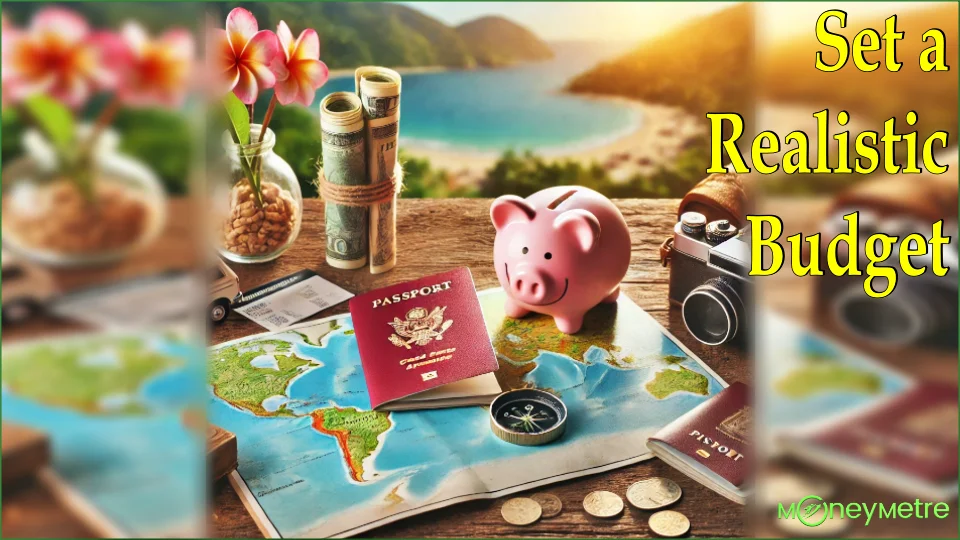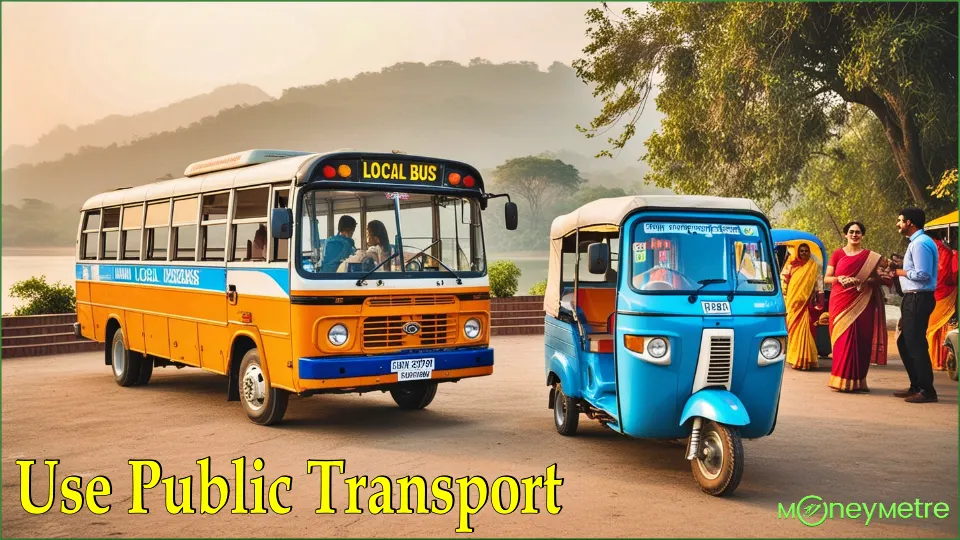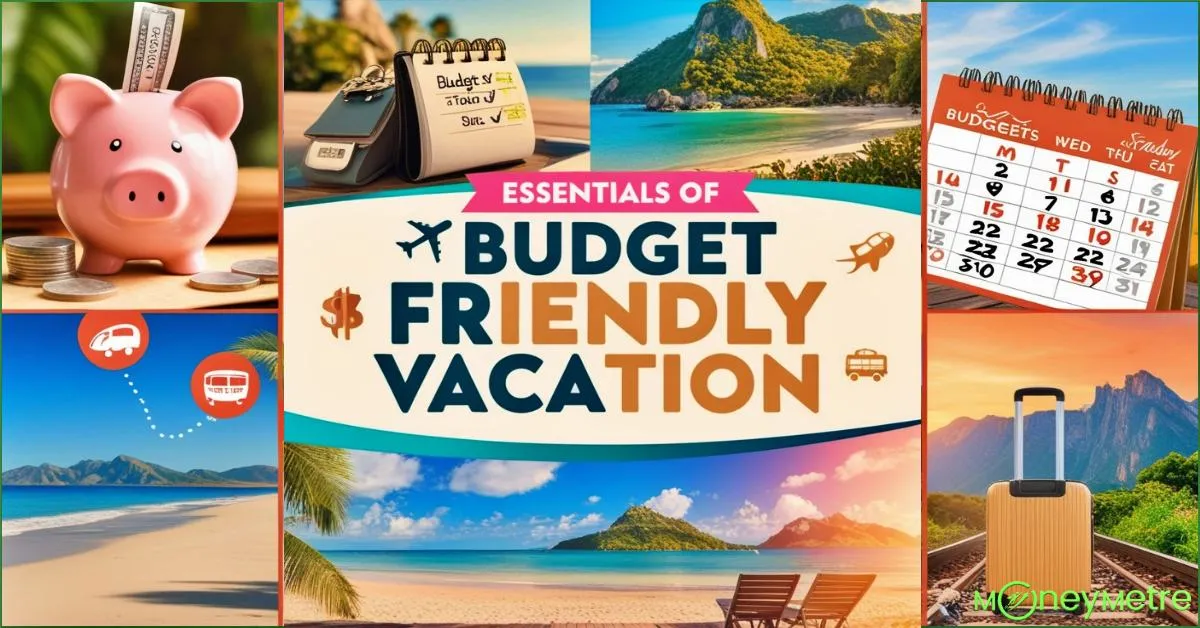In today’s fast-paced and uncertain world, vacations are no longer just a luxury; they’re essential for unwinding and recharging. However, with the rising costs of living, travel, and even daily expenses, the idea of planning a vacation may seem daunting.
This is where the concept of a budget-friendly vacation comes in—allowing you to enjoy a much-needed getaway without breaking the bank.
Learning how to plan a budget-friendly vacation is a skill that every traveler, especially those from India, should master. A vacation need not be extravagant to be memorable, and here’s a step-by-step guide to help you do just that.
Why Becoming Budget-Friendly is a Need Today?
The financial demands of today have increased, and savings are becoming more critical for future security. In addition, recent inflation and rising costs make it essential to be careful about spending, even on vacations.
When you plan a budget-friendly vacation, you’re not only saving money but also making sure you can travel more often without worrying about your finances. By planning smarter, you can explore new places, experience different cultures, and enjoy your time off without any financial stress.
Budget-friendly vacation is also environmentally responsible; when you opt for local destinations or choose affordable accommodations, you’re reducing your carbon footprint and supporting local businesses.
Plus, you’ll find that budget travel often leads to more immersive experiences and memories, allowing you to interact with locals and get a true feel for the place. So, let’s dive into how to plan a budget-friendly vacation without sacrificing the quality of your travel experience.
Step-by-Step Guide on How to Plan a Budget-Friendly Vacation

1. Set a Realistic Budget
The first step in planning a budget-friendly vacation is to set a realistic budget. Start by deciding the total amount you’re willing to spend on your trip, including travel, accommodation, food, and other expenses.
A clear budget allows you to make better decisions when choosing destinations, accommodations, and activities.
- Tip: Use budgeting apps like Walnut or Money Manager to set up your travel budget and track expenses easily.
Read Also: 10 Best Budgeting Apps for Windows: A Guide to Managing Finances Efficiently
2. Choose Affordable Destinations
India offers an array of stunning destinations that are affordable and accessible. Instead of international trips, consider exploring offbeat locations within India.
Places like Himachal Pradesh, Kerala, and Rajasthan offer beautiful sights, unique experiences, and affordable travel options. Choosing a less-popular destination also allows you to avoid crowds and enjoy a more authentic experience.
- Popular Budget-Friendly Destinations in India: Goa, Rishikesh, Pondicherry, Kasol, Udaipur, and Gokarna.
3. Plan Your Travel Smartly
Traveling during peak seasons, such as summer vacations or festival times, can increase your costs significantly.
Try to book flights or trains during the off-peak seasons to avail yourself of discounts. Look for flash sales on travel websites and keep an eye out for any discounts offered by IRCTC, Air India, or other travel providers.
- Affordable Transportation Options: Use platforms like MakeMyTrip, Goibibo, and Cleartrip to find the best deals on travel.
4. Book Budget Accommodations
Accommodation can be one of the biggest expenses of a vacation. However, with options like budget hotels, hostels, and homestays, you can save significantly.
Websites like OYO, Zostel, and Booking.com offer great deals on budget stays. You can also consider staying at guesthouses or even look for rooms on platforms like Airbnb that offer shared accommodations for a fraction of hotel prices.
- Pro Tip: If you’re traveling in a group, consider booking an entire house or apartment instead of separate rooms, as it often works out cheaper.
5. Plan Your Itinerary Wisely
A well-planned itinerary ensures you make the most of your time and money. Research free or low-cost activities in your destination, such as local sightseeing spots, parks, or cultural events.
In India, many historical sites and museums have affordable entry fees. Planning your daily activities beforehand helps you avoid last-minute expenses.
- Resources for Free Activities: Check local tourism websites like Incredible India or local government tourism boards for free attractions.
6. Save on Food Expenses
Food is another area where expenses can add up quickly. Avoid dining at expensive restaurants by opting for local eateries, food stalls, and markets where you can taste authentic dishes without paying a premium.
If your accommodation provides a kitchen, you can even prepare some meals yourself to save even more. Apps like Zomato and Swiggy often have deals and discounts that can help keep food costs low.
- Tip: Consider trying local delicacies in small, popular restaurants recommended by locals for an authentic experience without the high prices.

7. Use Public Transport
Using public transportation is not only cost-effective but also gives you a chance to experience the local culture. Many Indian cities offer economical options like buses, metros, and auto-rickshaws.
Services like Uber and Ola also provide affordable options for local travel, especially in metro cities. Some tourist destinations even offer bike rentals, which are a fun and budget-friendly way to explore.
8. Shop Smartly and Avoid Expensive Souvenirs
When traveling on a budget, it’s essential to avoid splurging on unnecessary items. Souvenirs can be pricey, especially in tourist-heavy areas, so try to shop at local markets where items are more affordable and often more authentic. Bargaining is also widely accepted in India, so don’t hesitate to negotiate for a better price.
- Pro Tip: Look for unique, handmade items in local markets that make meaningful souvenirs without the hefty price tag.
9. Leverage Credit Card Points and Discounts
If you frequently use a credit card, check if you have accumulated any reward points. Many credit cards offer discounts on travel bookings or cashbacks, which can help reduce expenses.
Platforms like Paytm and Amazon Pay often run cashback offers on bookings, so use them to save more.
10. Plan an Off-Season Getaway
Traveling during off-peak seasons is one of the easiest ways to enjoy a budget-friendly vacation. Popular destinations often offer lower rates for flights, accommodations, and activities when fewer tourists visit.
For example, beach destinations are usually cheaper during the monsoon, while hill stations have lower prices just before the summer rush.
Traveling off-season allows you to explore at a relaxed pace, enjoy fewer crowds, and save on costs, making it a great way to have an affordable, enjoyable vacation.
Conclusion: A Budget-Friendly Vacation is Possible with Planning
Planning a budget-friendly vacation is entirely achievable, and it doesn’t mean you have to compromise on experiences. With some strategic planning, careful budgeting, and a bit of creativity, you can enjoy a memorable vacation without overspending.
Choosing the right destination, booking affordable accommodation, using local transport, and sticking to your budget are the keys to success. So, next time you’re dreaming of a getaway, remember that learning how to plan a budget-friendly vacation can make that dream come true without any financial stress.
A well-planned vacation allows you to return feeling refreshed and relaxed while still maintaining your budget, proving that you don’t have to be wealthy to explore the world—you just have to be smart with your money.
Read Also: 10 Best Ways to Build an Emergency Fund
FAQs on How to Plan a Budget-Friendly Vacation
-
How can I save money on flights for a budget-friendly vacation?
Look for flash sales on travel websites and try booking tickets in advance. Opting for off-peak times and using price comparison tools like Skyscanner can also help find cheaper flights.
-
Is it safe to stay in budget accommodations?
Yes, budget accommodations like OYO, Zostel, and certain Airbnbs are generally safe. Check reviews, choose reputable platforms, and verify security measures before booking.
-
What are some budget-friendly destinations in India?
Some popular affordable destinations include Goa, Rishikesh, Udaipur, Kasol, and Pondicherry, offering plenty of activities and sights without high costs.
-
How can I avoid overspending on food during travel?
Opt for local eateries, and food stalls, or try cooking some meals yourself if your accommodation has a kitchen. Use food delivery apps like Zomato and Swiggy for discounts.
-
Should I use a travel credit card for booking?
Yes, many travel credit cards offer rewards, cashback, and discounts on bookings, which can significantly reduce your expenses.
-
Are there any hidden costs I should be aware of while traveling?
Be aware of extra charges for luggage, resort fees, and tips. Check terms and conditions on bookings to avoid surprise charges at your destination.
-
How can I make the most of a short budget-friendly vacation?
To maximize a short vacation, plan your itinerary in advance with free or low-cost activities. Focus on exploring one or two main attractions per day, use public transport to save on travel within the city, and avoid time-consuming activities that require high entrance fees. This way, you can enjoy a fulfilling experience without stretching your budget or time.
Read Other Latest Posts Below







